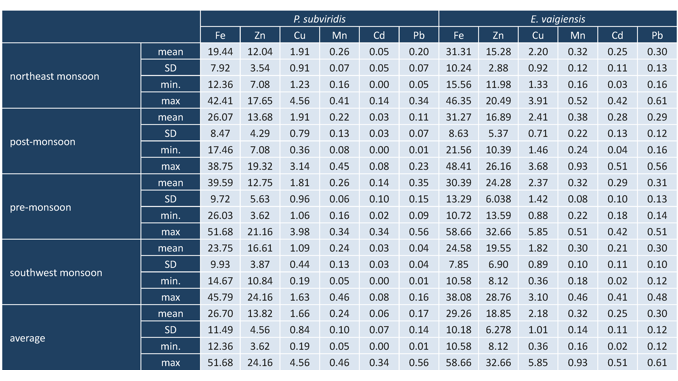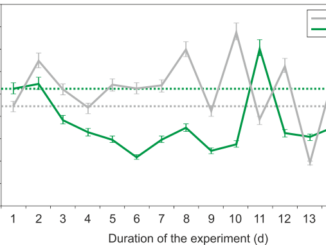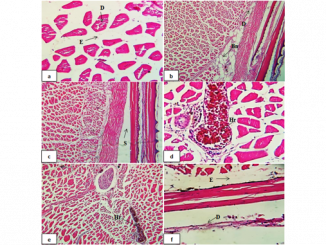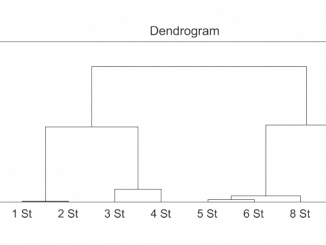
Paper category: Original research paper
Corresponding author: Quratulan Ahmed (quratulana@gmail.com)
DOI: 10.1515/ohs-2020-0013
Received: 29/08/2019
Accepted: 16/11/2019
Full text: here
Citation (APA style): Oceanological and Hydrobiological Studies, Volume 49, Issue 2, Pages 140–146, eISSN 1897-3191, ISSN 1730-413X, DOI: https://doi.org/10.1515/ohs-2020-0013.
Abstract
In this study, muscle samples collected from Planiliza subviridis (Valenciennes, 1836) and Ellochelon vaigiensis (Quoy & Gaimard, 1825) caught on the Balochistan coast (Damb Harbor) between January and December 2015 (during the northeast monsoon, post-monsoon and pre-monsoon seasons, and the southwest monsoon) were analyzed to determine concentrations of heavy metals: iron, zinc, copper, manganese, cadmium and lead by an atomic absorption spectrophotometer, expressed per unit of dry weight of each sample. The average measured level of Fe, Zn, Cu, Mn, Cd and Pb for P. subviridis was 26.70 ± 11.49 µg g−1, 13.82 ± 4.56 µg g−1, 1.66 ± 0.84 µg g−1, 0.24 ± 0.10 µg g−1, 0.06 ± 0.07 µg g−1 and 0.17 ± 0.14 µg g−1, respectively. The average level of the same metals for E. vaigiensis was 29.26 ± 10.18 µg g−1, 18.85 ± 6.28 µg g−1, 2.18 ± 1.01 µg g−1, 0.32 ± 0.14 µg g−1, 0.25 ± 0.11 µg g−1 and 0.30 ± 0.12 µg g−1, respectively. The highest Pb accumulation (0.56 µg g−1 and 0.61 µg g−1) detected in P. subviridis and E. vaigiensis is above the limit value (0.50 µg g−1) reported by FAO, hence the accumulation of Pb in these two fish species should be monitored in the future.
References
Agusa, T., Kunito, T., Yasunaga, G., Iwata, H., Subramanian, A. et al. (2005). Concentrations of trace elements in marine fish and its risk assessment in Malaysia. Marine Pollution Bulletin 51(8–12): 896–911. DOI: 10.1016/j.marpolbul.2005.06.007.
Ali, S.S., Siddiqui, I., Khan, F.A. & Munshi, A.B. (2013). Heavy metals contamination in fish and shrimp from coastal regions of Karachi, Pakistan. Biological Sciences – PJSIR. 56(1): 46–52.
Al-Khafajy, B.Y., Al-Imarah, F.J.M. & Mohamed, A.R.M. (1997). Trace Metals in Water, Sediments and Green Back Mullet (Liza subviridus) from Shatt Al-Arab Estuary. Marine Mesopotamica 12(1): 7–23.
Al-Najare, G.A. (2012). Concentration of Metals in the Fish Liza subviridis from the Iraqi Marine Estimation. Journal of King Abdulaziz University Marine Sciences 23(1): 129–146.
Bernhard, M. (1976). Sampling analyses of biological material. Manuel of methods in aquatic environment research. FAO Fisheries Technical Paper. FIRI/T158, Roma.
Biswas, S., Prabhu, R.K., Hussain, K.J., Selvanayagam, M. & Satpathy, K.K. (2012). Heavy metal concentration in edible fishes from coastal region of Kalpakkam, southeastern part of India. Environ. Monit. Assess. 184: 5097–5104. DOI: 10.1007/s10661-011-2325-y.
Chakraborty, S., Biswas, S., Banerjee, K. & Mitra, A. (2016). Concentrations of Zn, Cu and Pb in The Muscle of Two Edible Finfish Species in and around Gangetic Delta Region. International Journal of Life Science and Pharma Research. 6(3): 14–22.
Chary, N.S., Kamala, C.T. & Raj, D.S.S. (2008). Assessing risk of heavy metals from consuming food grown on sewage irrigated soils and food chain transfer. Ecotoxicol Environ. 69: 513–524. DOI: 10.1016/j.ecoenv.2007.04.013.
Chughtai, M.I. & Mahmood, K. (2012). Semi-intensive Carp Culture in Saline Water-Logged Area: A Multi-Location Study in Shorkot (District Jhang), Pakistan. Pakistan J. Zool. 44(4): 1065–1072.
Das, N.G. (1992). Artificial breeding of Mullet (Liza subviridis). Final Report Contract Research Project, Bangladesh Agriculture Council. 3 pp.
Environmental Protection Agency (EPA). (2004). Update: National listing of fish and wildlife consumption advisories. Cincinnati, Ohio, US Environmental Protection Agency.
FAO. (1983). Compilation of legal limits for hazardous substances in fish and fishery products. FAO Fishery Circular No. 464: 5–100.
FAO/WHO. (2004). Summary of Evaluations Performed by the Joint FAO/WHO Expert Committee on Food Additives (JECFA 1956-2003). International Life Sciences Institute Press, Washington, DC., USA.
Kannan, K., Agusa, T., Evans, T.J. & Tanabe, S. (2007). Trace element concentrations in livers of polar bears from two populations in Northern and Western Alaska. Arch. Environ. Contamin. Toxicol. 53: 473–482. DOI: 10.1007/s00244-007-0018-x.
Linde, A.R., Sanchez-Galan, S., Izquierdo, J.I., Arribas, P. & Maranon, E. (1998). Brown trout as biomonitor of heavy metal pollution: Effect of age on the reliability of the assessment. Ecotoxicology and Environmental Safety 40:120-125. DOI: 10.1006/eesa.1998.1652.
Mitra, A., Ghosh, R. (2014). Bioaccumulation Pattern of Heavy Metals in Commercially Important Fishes in and around Indian Sundarbans. Global Journal of Animal Scientific Research 2(1): 33–44.
de Mora, S., Scott, W.F., Eric, W. & Sabine, A. (2004). Distribution of heavy metals in marine bivalves, fish and coastal sediments in the gulf and Gulf of Oman. Marine Pollution Bulletin 49: 410–424. DOI: 10.1016/j.marpolbul.2004.02.029.
Norouzi, M., Mansouri, B., Hamidian, A.H., Zarei, I. & Mansouri, A. (2012). Metal concentrations in tissues of two fish species from Qeshm Island, Iran. Bulletin of Environmental Contamination and Toxicology 89(5): 1004–1008. DOI: 10.1007/s00128-012-0809-2.
Olowu, R.A., Ayejuyo, O.O., Adewuyi, G.O., Adejoro, I.A. & Akinbola, T.A. (2010). Assessment of pollution trend of Oke Afa Canal Lagos, Nigeria. E-Journal of Chemistry 7: 605–611. DOI: 10.1155/2010/949017.
Rose, J., Hutcheson, M.S., West, C.R., Pancorbo, O. & Hulme, K. (1999). Fish Mercury Distribution in Massachusetts, USA Lakes. Environmental Toxicology and Chemistry 18(7): 1370–1379. DOI: 10.1002/etc.5620180705.
Sia Su, G., Martillano, K.J., Alcantara, T.P., Ragragio, E., De Jesus, J. et al. (2009). Assessing heavy metals in the waters, fish and macroinvertebrates in Manila Bay, Philippines. Journal of Applied Sciences in Environmental Sanitation 4(3): 187–195.
Sivaperumal, P., Sankar, T.V. & Viswanathan Nair, P.G. (2007). Heavy metal concentrations in fish, shellfish and fish products from internal markets of India visa-vis international standards. Food Chemistry 102: 612–620. DOI: 10.1016/j.foodchem.2006.05.041.
World Health Organization (WHO). (1989). Heavy metals environmental aspects. Environmental Health Criteria. No.85 Geneva Switzerland.




Be the first to comment